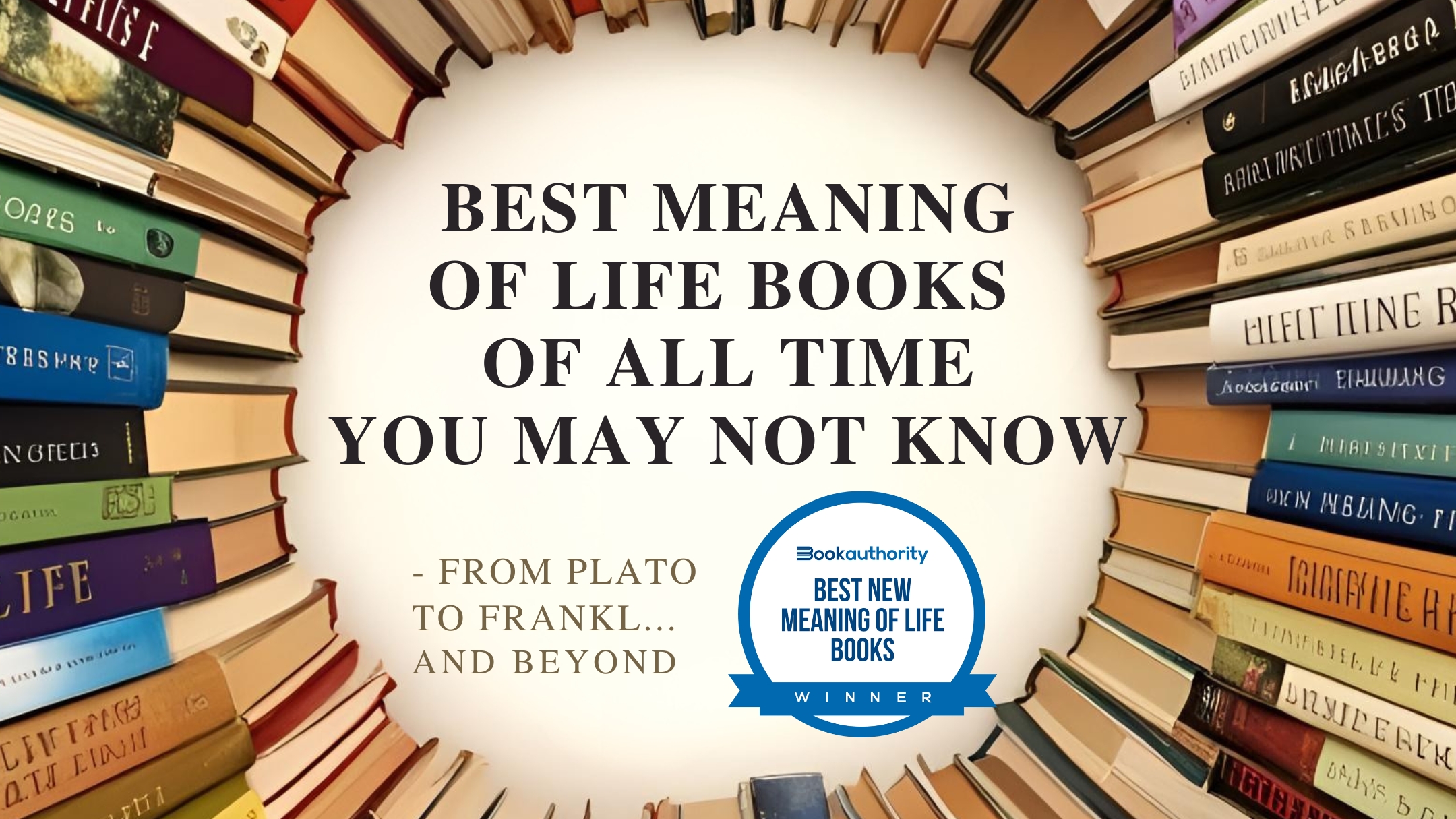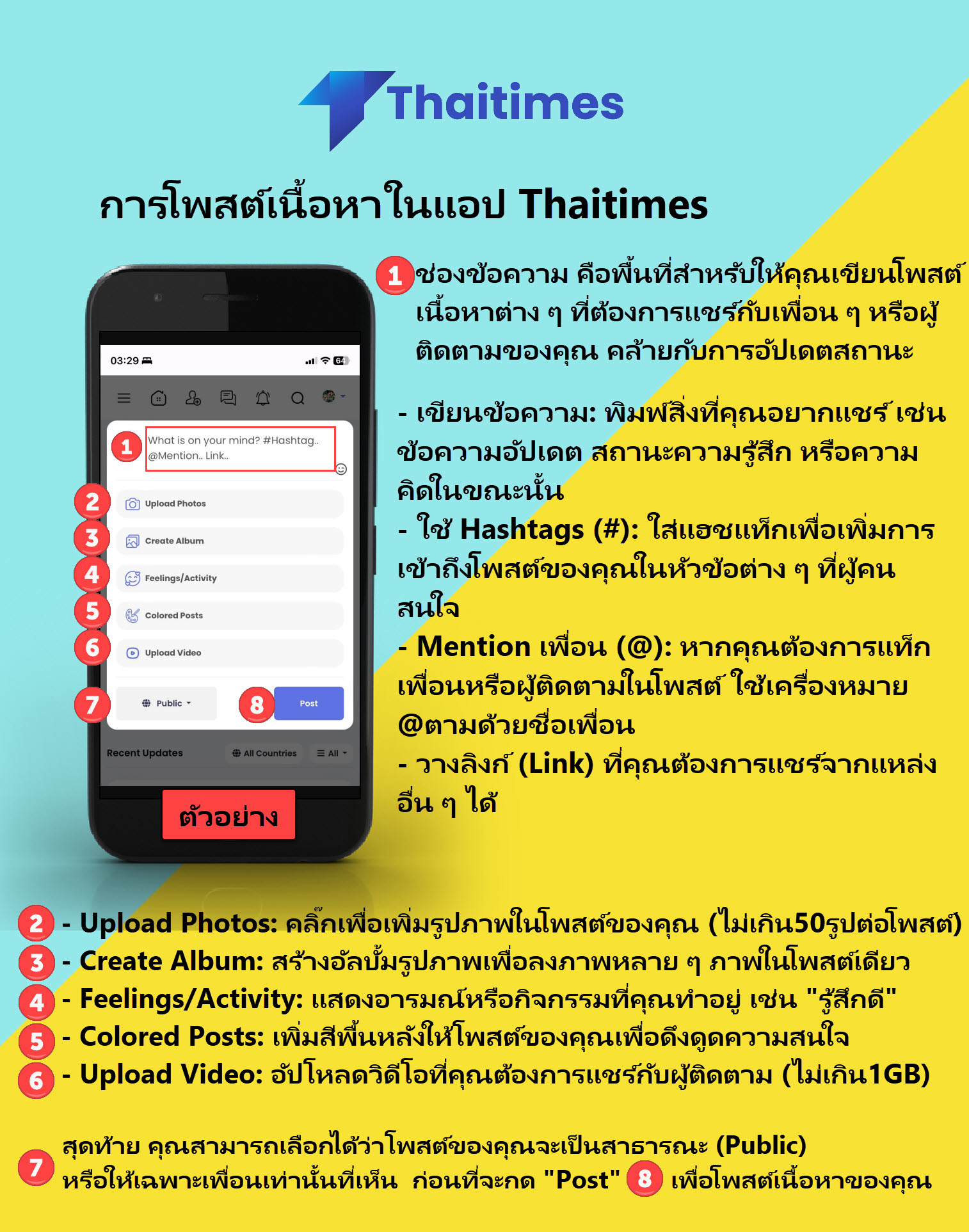รวมข่าวจากเวบ TechRadar
#รวมข่าวIT #20251129 #TechRadar
AI อาจทำให้หลายงานหายไป
มีรายงานใหม่ที่ทำให้ผู้บริหารทั่วโลกเริ่มกังวล เพราะผลการสำรวจพบว่าครึ่งหนึ่งของผู้บริหารมองว่าตอนนี้บริษัทมีพนักงานมากเกินความจำเป็นราว 10-19% และในอีกสามปีข้างหน้าอาจเกินถึง 30-50% สาเหตุหลักคือการนำ AI มาใช้ในงานประจำ เช่น งานหลังบ้าน งานบริการลูกค้า และงานเริ่มต้นด้านการเงินหรือ HR ที่ AI สามารถทำแทนได้อย่างมีประสิทธิภาพ หลายองค์กรจึงเริ่มคิดใหม่ว่าบทบาทของคนจะเปลี่ยนไปเป็นการทำงานร่วมกับ AI มากกว่าทำงานแทน AI โดยตรง ขณะเดียวกัน Amazon เองก็ยอมรับว่า AI จะทำให้คนทำงานบางส่วนลดลง แม้จะมีงานใหม่เกิดขึ้น แต่ภาพรวมคือจำนวนคนทำงานอาจลดลงในอนาคต
https://www.techradar.com/pro/another-major-survey-warns-ai-could-lead-to-major-job-cuts-at-your-business
แฮกเกอร์โจมตีผู้ใช้ Zendesk
กลุ่ม Scattered Lapsus$ Hunters ที่เคยโจมตี Salesforce ตอนนี้หันมาเล่นงานผู้ใช้ Zendesk โดยใช้วิธีสร้างโดเมนปลอมกว่า 40 แห่งเพื่อหลอกให้คนกรอกข้อมูลเข้าสู่ระบบ บางครั้งถึงขั้นส่งตั๋วซัพพอร์ตปลอมเข้าไปในระบบ Zendesk เพื่อแพร่มัลแวร์และขโมยสิทธิ์การเข้าถึงของเจ้าหน้าที่ช่วยเหลือ นักวิจัยด้านความปลอดภัยเตือนว่ากลยุทธ์นี้อันตรายมาก เพราะมันเจาะตรงไปที่ทีมซัพพอร์ตที่มักต้องตอบสนองอย่างเร่งด่วน ทำให้มีโอกาสตกหลุมพรางสูง แม้จะมีข่าวโยงไปถึงการโจมตี Discord แต่กลุ่มนี้ก็ปฏิเสธว่าไม่เกี่ยวข้อง
https://www.techradar.com/pro/security/zendesk-users-targeted-by-scattered-lapsus-usd-hunters-hackers-and-fake-support-sites
ยุโรปนำหน้าด้านความปลอดภัยไซเบอร์ แต่สหราชอาณาจักรเริ่มตามไม่ทัน
รายงาน Digital Quality of Life Index 2025 ของ Surfshark เผยว่าประเทศในยุโรปครองอันดับต้น ๆ ด้านความปลอดภัยดิจิทัล เช่น ฟินแลนด์ เยอรมนี และฝรั่งเศส แต่สหราชอาณาจักรกลับตกอันดับจากที่เคยอยู่อันดับ 6 ด้านไซเบอร์ซีเคียวริตี้ในปี 2024 ลงมาอยู่อันดับ 39 ในปีนี้ แม้ยังมีจุดแข็งเรื่องการคุ้มครองข้อมูลตามมาตรฐาน GDPR แต่ความก้าวหน้าด้านความปลอดภัยกลับช้ากว่าประเทศอื่น อย่างไรก็ตาม สหราชอาณาจักรยังมีจุดเด่นด้าน AI ที่ติดอันดับ 4 ของโลก ซึ่งอาจช่วยเสริมความแข็งแกร่งด้านความปลอดภัยในอนาคต
https://www.techradar.com/vpn/vpn-privacy-security/europe-tops-the-charts-in-digital-security-but-the-uk-might-be-quickly-falling-behind-says-surfshark
OnePlus 15 เตรียมวางขายในสหรัฐฯ หลังผ่านการอนุมัติ
สมาร์ทโฟน OnePlus 15 ที่เพิ่งเปิดตัวและได้รับคะแนนรีวิวเต็ม 5 ดาวจาก TechRadar กำลังจะเข้าสู่ตลาดสหรัฐฯ หลังผ่านการรับรองจาก FCC ซึ่งเป็นขั้นตอนสุดท้ายก่อนวางขาย รุ่นนี้โดดเด่นด้วยประสิทธิภาพ แบตเตอรี่ และกล้องที่ยอดเยี่ยม จนถูกยกให้ “ดีกว่าสมบูรณ์แบบ” ราคาที่คาดว่าจะเริ่มต้นราว 899.99 ดอลลาร์ ถือเป็นการกลับมาท้าทายตลาดที่มักถูกครองโดย Samsung และ Google Pixel
https://www.techradar.com/phones/oneplus-phones/the-oneplus-15-clears-its-final-hurdle-for-a-us-launch-heres-why-we-gave-the-flagship-a-rare-five-stars
รัฐบาลอังกฤษกดดันบริษัทโทรคมนาคมให้โปร่งใสเรื่องราคา
รัฐบาลอังกฤษโดยรัฐมนตรีการคลังและรัฐมนตรีเทคโนโลยีออกมาเรียกร้องให้บริษัทโทรคมนาคมรายใหญ่ เช่น BT/EE, Vodafone, Sky และ TalkTalk แสดงรายละเอียดราคาที่ชัดเจนขึ้น เพื่อป้องกันไม่ให้ลูกค้าถูกขึ้นราคาที่ไม่คาดคิด โดยต้องเปลี่ยนจากการแจ้งเป็นเปอร์เซ็นต์มาเป็นตัวเลขจริงเป็นปอนด์และเพนนี นอกจากนี้ยังมีแผนลงทุนโครงสร้างพื้นฐานเพื่อให้ประชาชนเข้าถึง 5G SA ภายในปี 2030 และอินเทอร์เน็ตความเร็วสูงระดับกิกะบิตครอบคลุม 99% ภายในปี 2032
https://www.techradar.com/pro/uk-government-tells-telecoms-to-do-more-to-protect-customers
หลายเขตในลอนดอนถูกโจมตีทางไซเบอร์
มีรายงานว่าหลายสภาท้องถิ่นในกรุงลอนดอนถูกโจมตีทางไซเบอร์ ทำให้ระบบบริการประชาชนบางส่วนหยุดชะงัก การโจมตีครั้งนี้สร้างความกังวลอย่างมากเพราะกระทบต่อข้อมูลและการทำงานของหน่วยงานท้องถิ่นที่ประชาชนพึ่งพาอยู่ทุกวัน แม้ยังไม่มีการเปิดเผยรายละเอียดว่าใครอยู่เบื้องหลัง แต่เหตุการณ์นี้สะท้อนให้เห็นว่าหน่วยงานภาครัฐก็เป็นเป้าหมายสำคัญของแฮกเกอร์เช่นกัน และจำเป็นต้องเร่งเสริมมาตรการป้องกัน
https://www.techradar.com/pro/security/multiple-london-councils-affected-by-apparent-cyberattack
Cybersecurity Burnout: เมื่อโลกดิจิทัลทำให้คนทำงานหมดแรง
ในวงการไซเบอร์ ความเร็วและแรงกดดันคือเรื่องปกติ แต่สิ่งที่ตามมาคือความเหนื่อยล้าสะสมจนกลายเป็น “burnout” ที่กระทบทั้งสุขภาพและประสิทธิภาพการทำงาน งานวิจัยล่าสุดเผยว่ากว่า 76% ของผู้เชี่ยวชาญด้านความปลอดภัยไซเบอร์รู้สึกเหนื่อยล้าในปีที่ผ่านมา และ 69% บอกว่ามันแย่ลงเรื่อย ๆ ปัญหานี้ไม่ได้กระทบแค่ตัวบุคคล แต่ยังทำให้ทีมอ่อนแรง เสี่ยงต่อการถูกโจมตีมากขึ้น ทางออกคือการสร้างวัฒนธรรมองค์กรที่สนับสนุน ลดภาระงาน และใช้บริการเสริมอย่าง MDR ที่ช่วยแบ่งเบาภาระได้จริง เรื่องนี้สะท้อนว่า “การป้องกันภัยไซเบอร์” ไม่ใช่แค่เรื่องเทคโนโลยี แต่เป็นเรื่องของคนด้วย
https://www.techradar.com/pro/tackling-cybersecurity-burnout-once-and-for-all
Infosys กับแนวคิดทำงาน 72 ชั่วโมงต่อสัปดาห์
Narayana Murthy ผู้ร่วมก่อตั้ง Infosys จุดกระแสอีกครั้งด้วยการเสนอให้พนักงานทำงาน 72 ชั่วโมงต่อสัปดาห์ โดยมองว่านี่คือ “ความขยันที่แท้จริง” แต่เสียงวิจารณ์กลับดังสนั่น เพราะหลักฐานจาก WHO และการทดลองในหลายประเทศ เช่น ไอซ์แลนด์และญี่ปุ่น แสดงให้เห็นว่าการทำงานสั้นลงกลับทำให้ผลผลิตและสุขภาพดีขึ้น การผลักดันให้ทำงานหนักเกินไปจึงถูกมองว่าเป็นการละเลยความเป็นอยู่ของคนทำงาน และอาจย้อนกลับมาทำร้ายองค์กรเอง
https://www.techradar.com/pro/infosys-co-founder-once-again-calls-for-longer-than-70-hour-weeks-and-no-hes-not-joking
ChatGPT อายุครบ 3 ปี: จากกล่องข้อความสู่เครื่องมือสารพัด
จากวันที่เปิดตัวในปี 2022 ในฐานะ “การทดลองวิจัย” ChatGPT กลายเป็นหนึ่งในแอปที่โตเร็วที่สุดในโลก และวันนี้มันไม่ใช่แค่เครื่องมือเขียนอีเมล แต่เป็นผู้ช่วยที่ทำได้ทั้งวางแผนทริป สร้างสไลด์ ดีบักโค้ด ไปจนถึงสร้างภาพและเสียง สามปีที่ผ่านมา เทคโนโลยีเบื้องหลังพัฒนาอย่างก้าวกระโดดจาก GPT-3.5 จนถึง GPT-5.1 พร้อมความสามารถแบบมัลติโหมดที่รองรับข้อความ ภาพ เสียง และวิดีโอ แม้ยังไม่ถึงขั้น “AGI” อย่างที่หลายคนฝัน แต่ก็เปลี่ยนวิธีที่ผู้คนใช้ AI ในชีวิตประจำวันไปแล้วอย่างสิ้นเชิง
https://www.techradar.com/ai-platforms-assistants/chatgpt-turns-3-on-sunday-heres-how-far-its-really-come-and-where-its-heading-next
Amazon Fire TV Stick รุ่นใหม่รองรับ VPN แล้ว
ข่าวดีสำหรับสายสตรีมมิ่ง Amazon ปล่อยอัปเดต Vega OS ให้ Fire TV Stick รุ่นใหม่รองรับ VPN เป็นครั้งแรก ทำให้ผู้ใช้สามารถเข้าถึงคอนเทนต์ต่างประเทศและเพิ่มความปลอดภัยในการใช้งานได้ทันที อย่างไรก็ตาม ตอนนี้มีเพียง NordVPN และ IPVanish ที่พร้อมใช้งานบนระบบใหม่ ส่วนเจ้าอื่นยังตามไม่ทัน การมาของฟีเจอร์นี้ถือเป็นการยกระดับประสบการณ์สตรีมมิ่งให้ปลอดภัยและหลากหลายขึ้น
https://www.techradar.com/vpn/vpn-privacy-security/vpn-support-lands-on-next-gen-amazon-fire-tv-stick-but-only-two-vpns-are-ready
ช่องโหว่ใหม่ใน AI Browser: แค่ “#” ก็โดนเจาะได้
นักวิจัยเผยเทคนิค “HashJack” ที่ใช้เพียงการใส่ข้อความหลังเครื่องหมาย # ใน URL ก็สามารถสั่งการ AI assistant ในเบราว์เซอร์ให้ทำงานตามคำสั่งแฝงได้ โดยผู้ใช้ไม่รู้ตัว หน้าจอยังแสดงเว็บปกติ แต่เบื้องหลังข้อมูลอาจถูกส่งออกไปหรือถูกบิดเบือน นี่คือช่องโหว่ที่ทำให้การใช้ AI browser เสี่ยงต่อการถูกโจมตีแบบแนบเนียน และยากต่อการตรวจจับ การป้องกันจึงต้องเข้มงวดทั้งที่ระดับเครื่องและการออกแบบระบบ ไม่ใช่แค่การตรวจสอบทราฟฟิกทั่วไป
https://www.techradar.com/pro/thats-not-very-trendy-of-them-ai-browsers-can-be-hacked-with-a-simple-hashtag-experts-warn
Malicious LLMs: เมื่อ AI กลายเป็นเครื่องมือสร้างมัลแวร์
นักวิจัยเตือนว่าระบบ AI ที่ถูกปรับแต่งอย่างไม่ถูกต้องสามารถกลายเป็น “ผู้ช่วยสร้างมัลแวร์” ให้แม้แต่แฮกเกอร์มือใหม่ได้ง่าย ๆ เพียงแค่พิมพ์คำสั่งก็สามารถสร้างโค้ดอันตรายที่ซับซ้อนขึ้นมาได้ทันที นี่คือการเปิดประตูให้ภัยไซเบอร์แพร่กระจายเร็วกว่าเดิม และทำให้โลกดิจิทัลเสี่ยงต่อการถูกโจมตีในวงกว้างมากขึ้น ปัญหานี้สะท้อนว่า AI ไม่ใช่แค่เครื่องมือสร้างสรรค์ แต่ยังอาจเป็นอาวุธหากถูกใช้ผิดทาง
https://www.techradar.com/pro/security/malicious-llms-are-letting-even-unskilled-hackers-to-craft-dangerous-new-malware
Tapo RV30 Max Plus: หุ่นยนต์ดูดฝุ่นราคาดิ่ง
ใครที่มีปัญหาขนสุนัขเต็มบ้านคงยิ้มได้ เพราะ Tapo RV30 Max Plus ลดราคาหนักในช่วง Black Friday ทำให้การจัดการบ้านสะอาดง่ายขึ้นโดยไม่ต้องเหนื่อยแรงเอง รุ่นนี้ถูกรีวิวว่าใช้งานง่าย ดูดแรง และช่วยประหยัดเวลาได้มาก การลดราคาครั้งนี้จึงเป็นโอกาสดีสำหรับคนที่อยากลองใช้หุ่นยนต์ดูดฝุ่นโดยไม่ต้องจ่ายแพง
https://www.techradar.com/seasonal-sales/tackling-a-sea-of-dog-hair-was-a-daily-headache-for-me-until-i-bought-this-robot-vacuum
Cloudways vs InMotion Hosting: ศึกโฮสติ้ง WordPress
สำหรับคนทำเว็บไซต์ WordPress การเลือกโฮสติ้งคือเรื่องสำคัญ บทความนี้เปรียบเทียบ Cloudways และ InMotion Hosting ว่าใครตอบโจทย์มากกว่ากัน ทั้งในด้านความเร็ว ความเสถียร การสนับสนุนลูกค้า และราคา ผลลัพธ์คือแต่ละเจ้าเหมาะกับกลุ่มผู้ใช้ต่างกัน Cloudways เด่นเรื่องความยืดหยุ่นและการปรับแต่ง ส่วน InMotion Hosting โดดเด่นด้านบริการลูกค้าและความคุ้มค่า
https://www.techradar.com/pro/website-hosting/cloudways-vs-inmotion-hosting-which-is-better-for-wordpress-sites
Commodore 64 กลับมาอีกครั้งหลังหายไป 30 ปี
เครื่องคอมพิวเตอร์ในตำนาน Commodore 64 ที่เคยครองใจคนยุค 80 กำลังกลับมาผลิตใหม่อีกครั้ง แม้จะไม่ใช่เครื่องที่ตอบโจทย์การใช้งานสมัยใหม่ แต่ก็เป็นการปลุกความทรงจำและความหลงใหลในเทคโนโลยีคลาสสิก หลายคนมองว่ามันคือ “ของสะสม” มากกว่าคอมพิวเตอร์จริง ๆ และการกลับมาครั้งนี้ก็สร้างกระแสความตื่นเต้นในหมู่แฟน ๆ ได้ไม่น้อย
https://www.techradar.com/computing/the-commodore-64-is-back-on-the-production-line-for-the-first-time-in-30-years-and-i-want-it-even-if-it-makes-zero-sense
ระวังอีเมลหลอกลวงช่วงโบนัสคริสต์มาส
ใกล้ช่วงโบนัสปลายปี แฮกเกอร์ก็ไม่พลาดโอกาสปลอมอีเมลหลอกลวงให้คนหลงเชื่อ โดยอ้างว่าเป็นการแจ้งโบนัสหรือสิทธิพิเศษ เพื่อให้เหยื่อคลิกและกรอกข้อมูลส่วนตัว ผู้เชี่ยวชาญเตือนว่าช่วงนี้ต้องตรวจสอบอีเมลอย่างละเอียด เพราะการโจมตีลักษณะนี้แพร่หลายมากขึ้น และอาจทำให้สูญเสียข้อมูลหรือเงินโดยไม่รู้ตัว
https://www.techradar.com/pro/security/excited-for-your-christmas-bonus-so-are-scammers-so-check-your-emails-carefully
#รวมข่าวIT #20251129 #TechRadar
AI อาจทำให้หลายงานหายไป
มีรายงานใหม่ที่ทำให้ผู้บริหารทั่วโลกเริ่มกังวล เพราะผลการสำรวจพบว่าครึ่งหนึ่งของผู้บริหารมองว่าตอนนี้บริษัทมีพนักงานมากเกินความจำเป็นราว 10-19% และในอีกสามปีข้างหน้าอาจเกินถึง 30-50% สาเหตุหลักคือการนำ AI มาใช้ในงานประจำ เช่น งานหลังบ้าน งานบริการลูกค้า และงานเริ่มต้นด้านการเงินหรือ HR ที่ AI สามารถทำแทนได้อย่างมีประสิทธิภาพ หลายองค์กรจึงเริ่มคิดใหม่ว่าบทบาทของคนจะเปลี่ยนไปเป็นการทำงานร่วมกับ AI มากกว่าทำงานแทน AI โดยตรง ขณะเดียวกัน Amazon เองก็ยอมรับว่า AI จะทำให้คนทำงานบางส่วนลดลง แม้จะมีงานใหม่เกิดขึ้น แต่ภาพรวมคือจำนวนคนทำงานอาจลดลงในอนาคต
https://www.techradar.com/pro/another-major-survey-warns-ai-could-lead-to-major-job-cuts-at-your-business
แฮกเกอร์โจมตีผู้ใช้ Zendesk
กลุ่ม Scattered Lapsus$ Hunters ที่เคยโจมตี Salesforce ตอนนี้หันมาเล่นงานผู้ใช้ Zendesk โดยใช้วิธีสร้างโดเมนปลอมกว่า 40 แห่งเพื่อหลอกให้คนกรอกข้อมูลเข้าสู่ระบบ บางครั้งถึงขั้นส่งตั๋วซัพพอร์ตปลอมเข้าไปในระบบ Zendesk เพื่อแพร่มัลแวร์และขโมยสิทธิ์การเข้าถึงของเจ้าหน้าที่ช่วยเหลือ นักวิจัยด้านความปลอดภัยเตือนว่ากลยุทธ์นี้อันตรายมาก เพราะมันเจาะตรงไปที่ทีมซัพพอร์ตที่มักต้องตอบสนองอย่างเร่งด่วน ทำให้มีโอกาสตกหลุมพรางสูง แม้จะมีข่าวโยงไปถึงการโจมตี Discord แต่กลุ่มนี้ก็ปฏิเสธว่าไม่เกี่ยวข้อง
https://www.techradar.com/pro/security/zendesk-users-targeted-by-scattered-lapsus-usd-hunters-hackers-and-fake-support-sites
ยุโรปนำหน้าด้านความปลอดภัยไซเบอร์ แต่สหราชอาณาจักรเริ่มตามไม่ทัน
รายงาน Digital Quality of Life Index 2025 ของ Surfshark เผยว่าประเทศในยุโรปครองอันดับต้น ๆ ด้านความปลอดภัยดิจิทัล เช่น ฟินแลนด์ เยอรมนี และฝรั่งเศส แต่สหราชอาณาจักรกลับตกอันดับจากที่เคยอยู่อันดับ 6 ด้านไซเบอร์ซีเคียวริตี้ในปี 2024 ลงมาอยู่อันดับ 39 ในปีนี้ แม้ยังมีจุดแข็งเรื่องการคุ้มครองข้อมูลตามมาตรฐาน GDPR แต่ความก้าวหน้าด้านความปลอดภัยกลับช้ากว่าประเทศอื่น อย่างไรก็ตาม สหราชอาณาจักรยังมีจุดเด่นด้าน AI ที่ติดอันดับ 4 ของโลก ซึ่งอาจช่วยเสริมความแข็งแกร่งด้านความปลอดภัยในอนาคต
https://www.techradar.com/vpn/vpn-privacy-security/europe-tops-the-charts-in-digital-security-but-the-uk-might-be-quickly-falling-behind-says-surfshark
OnePlus 15 เตรียมวางขายในสหรัฐฯ หลังผ่านการอนุมัติ
สมาร์ทโฟน OnePlus 15 ที่เพิ่งเปิดตัวและได้รับคะแนนรีวิวเต็ม 5 ดาวจาก TechRadar กำลังจะเข้าสู่ตลาดสหรัฐฯ หลังผ่านการรับรองจาก FCC ซึ่งเป็นขั้นตอนสุดท้ายก่อนวางขาย รุ่นนี้โดดเด่นด้วยประสิทธิภาพ แบตเตอรี่ และกล้องที่ยอดเยี่ยม จนถูกยกให้ “ดีกว่าสมบูรณ์แบบ” ราคาที่คาดว่าจะเริ่มต้นราว 899.99 ดอลลาร์ ถือเป็นการกลับมาท้าทายตลาดที่มักถูกครองโดย Samsung และ Google Pixel
https://www.techradar.com/phones/oneplus-phones/the-oneplus-15-clears-its-final-hurdle-for-a-us-launch-heres-why-we-gave-the-flagship-a-rare-five-stars
รัฐบาลอังกฤษกดดันบริษัทโทรคมนาคมให้โปร่งใสเรื่องราคา
รัฐบาลอังกฤษโดยรัฐมนตรีการคลังและรัฐมนตรีเทคโนโลยีออกมาเรียกร้องให้บริษัทโทรคมนาคมรายใหญ่ เช่น BT/EE, Vodafone, Sky และ TalkTalk แสดงรายละเอียดราคาที่ชัดเจนขึ้น เพื่อป้องกันไม่ให้ลูกค้าถูกขึ้นราคาที่ไม่คาดคิด โดยต้องเปลี่ยนจากการแจ้งเป็นเปอร์เซ็นต์มาเป็นตัวเลขจริงเป็นปอนด์และเพนนี นอกจากนี้ยังมีแผนลงทุนโครงสร้างพื้นฐานเพื่อให้ประชาชนเข้าถึง 5G SA ภายในปี 2030 และอินเทอร์เน็ตความเร็วสูงระดับกิกะบิตครอบคลุม 99% ภายในปี 2032
https://www.techradar.com/pro/uk-government-tells-telecoms-to-do-more-to-protect-customers
หลายเขตในลอนดอนถูกโจมตีทางไซเบอร์
มีรายงานว่าหลายสภาท้องถิ่นในกรุงลอนดอนถูกโจมตีทางไซเบอร์ ทำให้ระบบบริการประชาชนบางส่วนหยุดชะงัก การโจมตีครั้งนี้สร้างความกังวลอย่างมากเพราะกระทบต่อข้อมูลและการทำงานของหน่วยงานท้องถิ่นที่ประชาชนพึ่งพาอยู่ทุกวัน แม้ยังไม่มีการเปิดเผยรายละเอียดว่าใครอยู่เบื้องหลัง แต่เหตุการณ์นี้สะท้อนให้เห็นว่าหน่วยงานภาครัฐก็เป็นเป้าหมายสำคัญของแฮกเกอร์เช่นกัน และจำเป็นต้องเร่งเสริมมาตรการป้องกัน
https://www.techradar.com/pro/security/multiple-london-councils-affected-by-apparent-cyberattack
Cybersecurity Burnout: เมื่อโลกดิจิทัลทำให้คนทำงานหมดแรง
ในวงการไซเบอร์ ความเร็วและแรงกดดันคือเรื่องปกติ แต่สิ่งที่ตามมาคือความเหนื่อยล้าสะสมจนกลายเป็น “burnout” ที่กระทบทั้งสุขภาพและประสิทธิภาพการทำงาน งานวิจัยล่าสุดเผยว่ากว่า 76% ของผู้เชี่ยวชาญด้านความปลอดภัยไซเบอร์รู้สึกเหนื่อยล้าในปีที่ผ่านมา และ 69% บอกว่ามันแย่ลงเรื่อย ๆ ปัญหานี้ไม่ได้กระทบแค่ตัวบุคคล แต่ยังทำให้ทีมอ่อนแรง เสี่ยงต่อการถูกโจมตีมากขึ้น ทางออกคือการสร้างวัฒนธรรมองค์กรที่สนับสนุน ลดภาระงาน และใช้บริการเสริมอย่าง MDR ที่ช่วยแบ่งเบาภาระได้จริง เรื่องนี้สะท้อนว่า “การป้องกันภัยไซเบอร์” ไม่ใช่แค่เรื่องเทคโนโลยี แต่เป็นเรื่องของคนด้วย
https://www.techradar.com/pro/tackling-cybersecurity-burnout-once-and-for-all
Infosys กับแนวคิดทำงาน 72 ชั่วโมงต่อสัปดาห์
Narayana Murthy ผู้ร่วมก่อตั้ง Infosys จุดกระแสอีกครั้งด้วยการเสนอให้พนักงานทำงาน 72 ชั่วโมงต่อสัปดาห์ โดยมองว่านี่คือ “ความขยันที่แท้จริง” แต่เสียงวิจารณ์กลับดังสนั่น เพราะหลักฐานจาก WHO และการทดลองในหลายประเทศ เช่น ไอซ์แลนด์และญี่ปุ่น แสดงให้เห็นว่าการทำงานสั้นลงกลับทำให้ผลผลิตและสุขภาพดีขึ้น การผลักดันให้ทำงานหนักเกินไปจึงถูกมองว่าเป็นการละเลยความเป็นอยู่ของคนทำงาน และอาจย้อนกลับมาทำร้ายองค์กรเอง
https://www.techradar.com/pro/infosys-co-founder-once-again-calls-for-longer-than-70-hour-weeks-and-no-hes-not-joking
ChatGPT อายุครบ 3 ปี: จากกล่องข้อความสู่เครื่องมือสารพัด
จากวันที่เปิดตัวในปี 2022 ในฐานะ “การทดลองวิจัย” ChatGPT กลายเป็นหนึ่งในแอปที่โตเร็วที่สุดในโลก และวันนี้มันไม่ใช่แค่เครื่องมือเขียนอีเมล แต่เป็นผู้ช่วยที่ทำได้ทั้งวางแผนทริป สร้างสไลด์ ดีบักโค้ด ไปจนถึงสร้างภาพและเสียง สามปีที่ผ่านมา เทคโนโลยีเบื้องหลังพัฒนาอย่างก้าวกระโดดจาก GPT-3.5 จนถึง GPT-5.1 พร้อมความสามารถแบบมัลติโหมดที่รองรับข้อความ ภาพ เสียง และวิดีโอ แม้ยังไม่ถึงขั้น “AGI” อย่างที่หลายคนฝัน แต่ก็เปลี่ยนวิธีที่ผู้คนใช้ AI ในชีวิตประจำวันไปแล้วอย่างสิ้นเชิง
https://www.techradar.com/ai-platforms-assistants/chatgpt-turns-3-on-sunday-heres-how-far-its-really-come-and-where-its-heading-next
Amazon Fire TV Stick รุ่นใหม่รองรับ VPN แล้ว
ข่าวดีสำหรับสายสตรีมมิ่ง Amazon ปล่อยอัปเดต Vega OS ให้ Fire TV Stick รุ่นใหม่รองรับ VPN เป็นครั้งแรก ทำให้ผู้ใช้สามารถเข้าถึงคอนเทนต์ต่างประเทศและเพิ่มความปลอดภัยในการใช้งานได้ทันที อย่างไรก็ตาม ตอนนี้มีเพียง NordVPN และ IPVanish ที่พร้อมใช้งานบนระบบใหม่ ส่วนเจ้าอื่นยังตามไม่ทัน การมาของฟีเจอร์นี้ถือเป็นการยกระดับประสบการณ์สตรีมมิ่งให้ปลอดภัยและหลากหลายขึ้น
https://www.techradar.com/vpn/vpn-privacy-security/vpn-support-lands-on-next-gen-amazon-fire-tv-stick-but-only-two-vpns-are-ready
ช่องโหว่ใหม่ใน AI Browser: แค่ “#” ก็โดนเจาะได้
นักวิจัยเผยเทคนิค “HashJack” ที่ใช้เพียงการใส่ข้อความหลังเครื่องหมาย # ใน URL ก็สามารถสั่งการ AI assistant ในเบราว์เซอร์ให้ทำงานตามคำสั่งแฝงได้ โดยผู้ใช้ไม่รู้ตัว หน้าจอยังแสดงเว็บปกติ แต่เบื้องหลังข้อมูลอาจถูกส่งออกไปหรือถูกบิดเบือน นี่คือช่องโหว่ที่ทำให้การใช้ AI browser เสี่ยงต่อการถูกโจมตีแบบแนบเนียน และยากต่อการตรวจจับ การป้องกันจึงต้องเข้มงวดทั้งที่ระดับเครื่องและการออกแบบระบบ ไม่ใช่แค่การตรวจสอบทราฟฟิกทั่วไป
https://www.techradar.com/pro/thats-not-very-trendy-of-them-ai-browsers-can-be-hacked-with-a-simple-hashtag-experts-warn
Malicious LLMs: เมื่อ AI กลายเป็นเครื่องมือสร้างมัลแวร์
นักวิจัยเตือนว่าระบบ AI ที่ถูกปรับแต่งอย่างไม่ถูกต้องสามารถกลายเป็น “ผู้ช่วยสร้างมัลแวร์” ให้แม้แต่แฮกเกอร์มือใหม่ได้ง่าย ๆ เพียงแค่พิมพ์คำสั่งก็สามารถสร้างโค้ดอันตรายที่ซับซ้อนขึ้นมาได้ทันที นี่คือการเปิดประตูให้ภัยไซเบอร์แพร่กระจายเร็วกว่าเดิม และทำให้โลกดิจิทัลเสี่ยงต่อการถูกโจมตีในวงกว้างมากขึ้น ปัญหานี้สะท้อนว่า AI ไม่ใช่แค่เครื่องมือสร้างสรรค์ แต่ยังอาจเป็นอาวุธหากถูกใช้ผิดทาง
https://www.techradar.com/pro/security/malicious-llms-are-letting-even-unskilled-hackers-to-craft-dangerous-new-malware
Tapo RV30 Max Plus: หุ่นยนต์ดูดฝุ่นราคาดิ่ง
ใครที่มีปัญหาขนสุนัขเต็มบ้านคงยิ้มได้ เพราะ Tapo RV30 Max Plus ลดราคาหนักในช่วง Black Friday ทำให้การจัดการบ้านสะอาดง่ายขึ้นโดยไม่ต้องเหนื่อยแรงเอง รุ่นนี้ถูกรีวิวว่าใช้งานง่าย ดูดแรง และช่วยประหยัดเวลาได้มาก การลดราคาครั้งนี้จึงเป็นโอกาสดีสำหรับคนที่อยากลองใช้หุ่นยนต์ดูดฝุ่นโดยไม่ต้องจ่ายแพง
https://www.techradar.com/seasonal-sales/tackling-a-sea-of-dog-hair-was-a-daily-headache-for-me-until-i-bought-this-robot-vacuum
Cloudways vs InMotion Hosting: ศึกโฮสติ้ง WordPress
สำหรับคนทำเว็บไซต์ WordPress การเลือกโฮสติ้งคือเรื่องสำคัญ บทความนี้เปรียบเทียบ Cloudways และ InMotion Hosting ว่าใครตอบโจทย์มากกว่ากัน ทั้งในด้านความเร็ว ความเสถียร การสนับสนุนลูกค้า และราคา ผลลัพธ์คือแต่ละเจ้าเหมาะกับกลุ่มผู้ใช้ต่างกัน Cloudways เด่นเรื่องความยืดหยุ่นและการปรับแต่ง ส่วน InMotion Hosting โดดเด่นด้านบริการลูกค้าและความคุ้มค่า
https://www.techradar.com/pro/website-hosting/cloudways-vs-inmotion-hosting-which-is-better-for-wordpress-sites
Commodore 64 กลับมาอีกครั้งหลังหายไป 30 ปี
เครื่องคอมพิวเตอร์ในตำนาน Commodore 64 ที่เคยครองใจคนยุค 80 กำลังกลับมาผลิตใหม่อีกครั้ง แม้จะไม่ใช่เครื่องที่ตอบโจทย์การใช้งานสมัยใหม่ แต่ก็เป็นการปลุกความทรงจำและความหลงใหลในเทคโนโลยีคลาสสิก หลายคนมองว่ามันคือ “ของสะสม” มากกว่าคอมพิวเตอร์จริง ๆ และการกลับมาครั้งนี้ก็สร้างกระแสความตื่นเต้นในหมู่แฟน ๆ ได้ไม่น้อย
https://www.techradar.com/computing/the-commodore-64-is-back-on-the-production-line-for-the-first-time-in-30-years-and-i-want-it-even-if-it-makes-zero-sense
ระวังอีเมลหลอกลวงช่วงโบนัสคริสต์มาส
ใกล้ช่วงโบนัสปลายปี แฮกเกอร์ก็ไม่พลาดโอกาสปลอมอีเมลหลอกลวงให้คนหลงเชื่อ โดยอ้างว่าเป็นการแจ้งโบนัสหรือสิทธิพิเศษ เพื่อให้เหยื่อคลิกและกรอกข้อมูลส่วนตัว ผู้เชี่ยวชาญเตือนว่าช่วงนี้ต้องตรวจสอบอีเมลอย่างละเอียด เพราะการโจมตีลักษณะนี้แพร่หลายมากขึ้น และอาจทำให้สูญเสียข้อมูลหรือเงินโดยไม่รู้ตัว
https://www.techradar.com/pro/security/excited-for-your-christmas-bonus-so-are-scammers-so-check-your-emails-carefully
📌📡🟣 รวมข่าวจากเวบ TechRadar 🟣📡📌
#รวมข่าวIT #20251129 #TechRadar
🧑💻 AI อาจทำให้หลายงานหายไป
มีรายงานใหม่ที่ทำให้ผู้บริหารทั่วโลกเริ่มกังวล เพราะผลการสำรวจพบว่าครึ่งหนึ่งของผู้บริหารมองว่าตอนนี้บริษัทมีพนักงานมากเกินความจำเป็นราว 10-19% และในอีกสามปีข้างหน้าอาจเกินถึง 30-50% สาเหตุหลักคือการนำ AI มาใช้ในงานประจำ เช่น งานหลังบ้าน งานบริการลูกค้า และงานเริ่มต้นด้านการเงินหรือ HR ที่ AI สามารถทำแทนได้อย่างมีประสิทธิภาพ หลายองค์กรจึงเริ่มคิดใหม่ว่าบทบาทของคนจะเปลี่ยนไปเป็นการทำงานร่วมกับ AI มากกว่าทำงานแทน AI โดยตรง ขณะเดียวกัน Amazon เองก็ยอมรับว่า AI จะทำให้คนทำงานบางส่วนลดลง แม้จะมีงานใหม่เกิดขึ้น แต่ภาพรวมคือจำนวนคนทำงานอาจลดลงในอนาคต
🔗 https://www.techradar.com/pro/another-major-survey-warns-ai-could-lead-to-major-job-cuts-at-your-business
🔒 แฮกเกอร์โจมตีผู้ใช้ Zendesk
กลุ่ม Scattered Lapsus$ Hunters ที่เคยโจมตี Salesforce ตอนนี้หันมาเล่นงานผู้ใช้ Zendesk โดยใช้วิธีสร้างโดเมนปลอมกว่า 40 แห่งเพื่อหลอกให้คนกรอกข้อมูลเข้าสู่ระบบ บางครั้งถึงขั้นส่งตั๋วซัพพอร์ตปลอมเข้าไปในระบบ Zendesk เพื่อแพร่มัลแวร์และขโมยสิทธิ์การเข้าถึงของเจ้าหน้าที่ช่วยเหลือ นักวิจัยด้านความปลอดภัยเตือนว่ากลยุทธ์นี้อันตรายมาก เพราะมันเจาะตรงไปที่ทีมซัพพอร์ตที่มักต้องตอบสนองอย่างเร่งด่วน ทำให้มีโอกาสตกหลุมพรางสูง แม้จะมีข่าวโยงไปถึงการโจมตี Discord แต่กลุ่มนี้ก็ปฏิเสธว่าไม่เกี่ยวข้อง
🔗 https://www.techradar.com/pro/security/zendesk-users-targeted-by-scattered-lapsus-usd-hunters-hackers-and-fake-support-sites
🌍 ยุโรปนำหน้าด้านความปลอดภัยไซเบอร์ แต่สหราชอาณาจักรเริ่มตามไม่ทัน
รายงาน Digital Quality of Life Index 2025 ของ Surfshark เผยว่าประเทศในยุโรปครองอันดับต้น ๆ ด้านความปลอดภัยดิจิทัล เช่น ฟินแลนด์ เยอรมนี และฝรั่งเศส แต่สหราชอาณาจักรกลับตกอันดับจากที่เคยอยู่อันดับ 6 ด้านไซเบอร์ซีเคียวริตี้ในปี 2024 ลงมาอยู่อันดับ 39 ในปีนี้ แม้ยังมีจุดแข็งเรื่องการคุ้มครองข้อมูลตามมาตรฐาน GDPR แต่ความก้าวหน้าด้านความปลอดภัยกลับช้ากว่าประเทศอื่น อย่างไรก็ตาม สหราชอาณาจักรยังมีจุดเด่นด้าน AI ที่ติดอันดับ 4 ของโลก ซึ่งอาจช่วยเสริมความแข็งแกร่งด้านความปลอดภัยในอนาคต
🔗 https://www.techradar.com/vpn/vpn-privacy-security/europe-tops-the-charts-in-digital-security-but-the-uk-might-be-quickly-falling-behind-says-surfshark
📱 OnePlus 15 เตรียมวางขายในสหรัฐฯ หลังผ่านการอนุมัติ
สมาร์ทโฟน OnePlus 15 ที่เพิ่งเปิดตัวและได้รับคะแนนรีวิวเต็ม 5 ดาวจาก TechRadar กำลังจะเข้าสู่ตลาดสหรัฐฯ หลังผ่านการรับรองจาก FCC ซึ่งเป็นขั้นตอนสุดท้ายก่อนวางขาย รุ่นนี้โดดเด่นด้วยประสิทธิภาพ แบตเตอรี่ และกล้องที่ยอดเยี่ยม จนถูกยกให้ “ดีกว่าสมบูรณ์แบบ” ราคาที่คาดว่าจะเริ่มต้นราว 899.99 ดอลลาร์ ถือเป็นการกลับมาท้าทายตลาดที่มักถูกครองโดย Samsung และ Google Pixel
🔗 https://www.techradar.com/phones/oneplus-phones/the-oneplus-15-clears-its-final-hurdle-for-a-us-launch-heres-why-we-gave-the-flagship-a-rare-five-stars
📡 รัฐบาลอังกฤษกดดันบริษัทโทรคมนาคมให้โปร่งใสเรื่องราคา
รัฐบาลอังกฤษโดยรัฐมนตรีการคลังและรัฐมนตรีเทคโนโลยีออกมาเรียกร้องให้บริษัทโทรคมนาคมรายใหญ่ เช่น BT/EE, Vodafone, Sky และ TalkTalk แสดงรายละเอียดราคาที่ชัดเจนขึ้น เพื่อป้องกันไม่ให้ลูกค้าถูกขึ้นราคาที่ไม่คาดคิด โดยต้องเปลี่ยนจากการแจ้งเป็นเปอร์เซ็นต์มาเป็นตัวเลขจริงเป็นปอนด์และเพนนี นอกจากนี้ยังมีแผนลงทุนโครงสร้างพื้นฐานเพื่อให้ประชาชนเข้าถึง 5G SA ภายในปี 2030 และอินเทอร์เน็ตความเร็วสูงระดับกิกะบิตครอบคลุม 99% ภายในปี 2032
🔗 https://www.techradar.com/pro/uk-government-tells-telecoms-to-do-more-to-protect-customers
🏙️ หลายเขตในลอนดอนถูกโจมตีทางไซเบอร์
มีรายงานว่าหลายสภาท้องถิ่นในกรุงลอนดอนถูกโจมตีทางไซเบอร์ ทำให้ระบบบริการประชาชนบางส่วนหยุดชะงัก การโจมตีครั้งนี้สร้างความกังวลอย่างมากเพราะกระทบต่อข้อมูลและการทำงานของหน่วยงานท้องถิ่นที่ประชาชนพึ่งพาอยู่ทุกวัน แม้ยังไม่มีการเปิดเผยรายละเอียดว่าใครอยู่เบื้องหลัง แต่เหตุการณ์นี้สะท้อนให้เห็นว่าหน่วยงานภาครัฐก็เป็นเป้าหมายสำคัญของแฮกเกอร์เช่นกัน และจำเป็นต้องเร่งเสริมมาตรการป้องกัน
🔗 https://www.techradar.com/pro/security/multiple-london-councils-affected-by-apparent-cyberattack
🛡️ Cybersecurity Burnout: เมื่อโลกดิจิทัลทำให้คนทำงานหมดแรง
ในวงการไซเบอร์ ความเร็วและแรงกดดันคือเรื่องปกติ แต่สิ่งที่ตามมาคือความเหนื่อยล้าสะสมจนกลายเป็น “burnout” ที่กระทบทั้งสุขภาพและประสิทธิภาพการทำงาน งานวิจัยล่าสุดเผยว่ากว่า 76% ของผู้เชี่ยวชาญด้านความปลอดภัยไซเบอร์รู้สึกเหนื่อยล้าในปีที่ผ่านมา และ 69% บอกว่ามันแย่ลงเรื่อย ๆ ปัญหานี้ไม่ได้กระทบแค่ตัวบุคคล แต่ยังทำให้ทีมอ่อนแรง เสี่ยงต่อการถูกโจมตีมากขึ้น ทางออกคือการสร้างวัฒนธรรมองค์กรที่สนับสนุน ลดภาระงาน และใช้บริการเสริมอย่าง MDR ที่ช่วยแบ่งเบาภาระได้จริง เรื่องนี้สะท้อนว่า “การป้องกันภัยไซเบอร์” ไม่ใช่แค่เรื่องเทคโนโลยี แต่เป็นเรื่องของคนด้วย
🔗 https://www.techradar.com/pro/tackling-cybersecurity-burnout-once-and-for-all
⏱️ Infosys กับแนวคิดทำงาน 72 ชั่วโมงต่อสัปดาห์
Narayana Murthy ผู้ร่วมก่อตั้ง Infosys จุดกระแสอีกครั้งด้วยการเสนอให้พนักงานทำงาน 72 ชั่วโมงต่อสัปดาห์ โดยมองว่านี่คือ “ความขยันที่แท้จริง” แต่เสียงวิจารณ์กลับดังสนั่น เพราะหลักฐานจาก WHO และการทดลองในหลายประเทศ เช่น ไอซ์แลนด์และญี่ปุ่น แสดงให้เห็นว่าการทำงานสั้นลงกลับทำให้ผลผลิตและสุขภาพดีขึ้น การผลักดันให้ทำงานหนักเกินไปจึงถูกมองว่าเป็นการละเลยความเป็นอยู่ของคนทำงาน และอาจย้อนกลับมาทำร้ายองค์กรเอง
🔗 https://www.techradar.com/pro/infosys-co-founder-once-again-calls-for-longer-than-70-hour-weeks-and-no-hes-not-joking
🤖 ChatGPT อายุครบ 3 ปี: จากกล่องข้อความสู่เครื่องมือสารพัด
จากวันที่เปิดตัวในปี 2022 ในฐานะ “การทดลองวิจัย” ChatGPT กลายเป็นหนึ่งในแอปที่โตเร็วที่สุดในโลก และวันนี้มันไม่ใช่แค่เครื่องมือเขียนอีเมล แต่เป็นผู้ช่วยที่ทำได้ทั้งวางแผนทริป สร้างสไลด์ ดีบักโค้ด ไปจนถึงสร้างภาพและเสียง สามปีที่ผ่านมา เทคโนโลยีเบื้องหลังพัฒนาอย่างก้าวกระโดดจาก GPT-3.5 จนถึง GPT-5.1 พร้อมความสามารถแบบมัลติโหมดที่รองรับข้อความ ภาพ เสียง และวิดีโอ แม้ยังไม่ถึงขั้น “AGI” อย่างที่หลายคนฝัน แต่ก็เปลี่ยนวิธีที่ผู้คนใช้ AI ในชีวิตประจำวันไปแล้วอย่างสิ้นเชิง
🔗 https://www.techradar.com/ai-platforms-assistants/chatgpt-turns-3-on-sunday-heres-how-far-its-really-come-and-where-its-heading-next
📺 Amazon Fire TV Stick รุ่นใหม่รองรับ VPN แล้ว
ข่าวดีสำหรับสายสตรีมมิ่ง Amazon ปล่อยอัปเดต Vega OS ให้ Fire TV Stick รุ่นใหม่รองรับ VPN เป็นครั้งแรก ทำให้ผู้ใช้สามารถเข้าถึงคอนเทนต์ต่างประเทศและเพิ่มความปลอดภัยในการใช้งานได้ทันที อย่างไรก็ตาม ตอนนี้มีเพียง NordVPN และ IPVanish ที่พร้อมใช้งานบนระบบใหม่ ส่วนเจ้าอื่นยังตามไม่ทัน การมาของฟีเจอร์นี้ถือเป็นการยกระดับประสบการณ์สตรีมมิ่งให้ปลอดภัยและหลากหลายขึ้น
🔗 https://www.techradar.com/vpn/vpn-privacy-security/vpn-support-lands-on-next-gen-amazon-fire-tv-stick-but-only-two-vpns-are-ready
⚠️ ช่องโหว่ใหม่ใน AI Browser: แค่ “#” ก็โดนเจาะได้
นักวิจัยเผยเทคนิค “HashJack” ที่ใช้เพียงการใส่ข้อความหลังเครื่องหมาย # ใน URL ก็สามารถสั่งการ AI assistant ในเบราว์เซอร์ให้ทำงานตามคำสั่งแฝงได้ โดยผู้ใช้ไม่รู้ตัว หน้าจอยังแสดงเว็บปกติ แต่เบื้องหลังข้อมูลอาจถูกส่งออกไปหรือถูกบิดเบือน นี่คือช่องโหว่ที่ทำให้การใช้ AI browser เสี่ยงต่อการถูกโจมตีแบบแนบเนียน และยากต่อการตรวจจับ การป้องกันจึงต้องเข้มงวดทั้งที่ระดับเครื่องและการออกแบบระบบ ไม่ใช่แค่การตรวจสอบทราฟฟิกทั่วไป
🔗 https://www.techradar.com/pro/thats-not-very-trendy-of-them-ai-browsers-can-be-hacked-with-a-simple-hashtag-experts-warn
🧑💻 Malicious LLMs: เมื่อ AI กลายเป็นเครื่องมือสร้างมัลแวร์
นักวิจัยเตือนว่าระบบ AI ที่ถูกปรับแต่งอย่างไม่ถูกต้องสามารถกลายเป็น “ผู้ช่วยสร้างมัลแวร์” ให้แม้แต่แฮกเกอร์มือใหม่ได้ง่าย ๆ เพียงแค่พิมพ์คำสั่งก็สามารถสร้างโค้ดอันตรายที่ซับซ้อนขึ้นมาได้ทันที นี่คือการเปิดประตูให้ภัยไซเบอร์แพร่กระจายเร็วกว่าเดิม และทำให้โลกดิจิทัลเสี่ยงต่อการถูกโจมตีในวงกว้างมากขึ้น ปัญหานี้สะท้อนว่า AI ไม่ใช่แค่เครื่องมือสร้างสรรค์ แต่ยังอาจเป็นอาวุธหากถูกใช้ผิดทาง
🔗 https://www.techradar.com/pro/security/malicious-llms-are-letting-even-unskilled-hackers-to-craft-dangerous-new-malware
🤖 Tapo RV30 Max Plus: หุ่นยนต์ดูดฝุ่นราคาดิ่ง
ใครที่มีปัญหาขนสุนัขเต็มบ้านคงยิ้มได้ เพราะ Tapo RV30 Max Plus ลดราคาหนักในช่วง Black Friday ทำให้การจัดการบ้านสะอาดง่ายขึ้นโดยไม่ต้องเหนื่อยแรงเอง รุ่นนี้ถูกรีวิวว่าใช้งานง่าย ดูดแรง และช่วยประหยัดเวลาได้มาก การลดราคาครั้งนี้จึงเป็นโอกาสดีสำหรับคนที่อยากลองใช้หุ่นยนต์ดูดฝุ่นโดยไม่ต้องจ่ายแพง
🔗 https://www.techradar.com/seasonal-sales/tackling-a-sea-of-dog-hair-was-a-daily-headache-for-me-until-i-bought-this-robot-vacuum
🌐 Cloudways vs InMotion Hosting: ศึกโฮสติ้ง WordPress
สำหรับคนทำเว็บไซต์ WordPress การเลือกโฮสติ้งคือเรื่องสำคัญ บทความนี้เปรียบเทียบ Cloudways และ InMotion Hosting ว่าใครตอบโจทย์มากกว่ากัน ทั้งในด้านความเร็ว ความเสถียร การสนับสนุนลูกค้า และราคา ผลลัพธ์คือแต่ละเจ้าเหมาะกับกลุ่มผู้ใช้ต่างกัน Cloudways เด่นเรื่องความยืดหยุ่นและการปรับแต่ง ส่วน InMotion Hosting โดดเด่นด้านบริการลูกค้าและความคุ้มค่า
🔗 https://www.techradar.com/pro/website-hosting/cloudways-vs-inmotion-hosting-which-is-better-for-wordpress-sites
🕹️ Commodore 64 กลับมาอีกครั้งหลังหายไป 30 ปี
เครื่องคอมพิวเตอร์ในตำนาน Commodore 64 ที่เคยครองใจคนยุค 80 กำลังกลับมาผลิตใหม่อีกครั้ง แม้จะไม่ใช่เครื่องที่ตอบโจทย์การใช้งานสมัยใหม่ แต่ก็เป็นการปลุกความทรงจำและความหลงใหลในเทคโนโลยีคลาสสิก หลายคนมองว่ามันคือ “ของสะสม” มากกว่าคอมพิวเตอร์จริง ๆ และการกลับมาครั้งนี้ก็สร้างกระแสความตื่นเต้นในหมู่แฟน ๆ ได้ไม่น้อย
🔗 https://www.techradar.com/computing/the-commodore-64-is-back-on-the-production-line-for-the-first-time-in-30-years-and-i-want-it-even-if-it-makes-zero-sense
📧 ระวังอีเมลหลอกลวงช่วงโบนัสคริสต์มาส
ใกล้ช่วงโบนัสปลายปี แฮกเกอร์ก็ไม่พลาดโอกาสปลอมอีเมลหลอกลวงให้คนหลงเชื่อ โดยอ้างว่าเป็นการแจ้งโบนัสหรือสิทธิพิเศษ เพื่อให้เหยื่อคลิกและกรอกข้อมูลส่วนตัว ผู้เชี่ยวชาญเตือนว่าช่วงนี้ต้องตรวจสอบอีเมลอย่างละเอียด เพราะการโจมตีลักษณะนี้แพร่หลายมากขึ้น และอาจทำให้สูญเสียข้อมูลหรือเงินโดยไม่รู้ตัว
🔗 https://www.techradar.com/pro/security/excited-for-your-christmas-bonus-so-are-scammers-so-check-your-emails-carefully
0 ความคิดเห็น
0 การแบ่งปัน
913 มุมมอง
0 รีวิว







